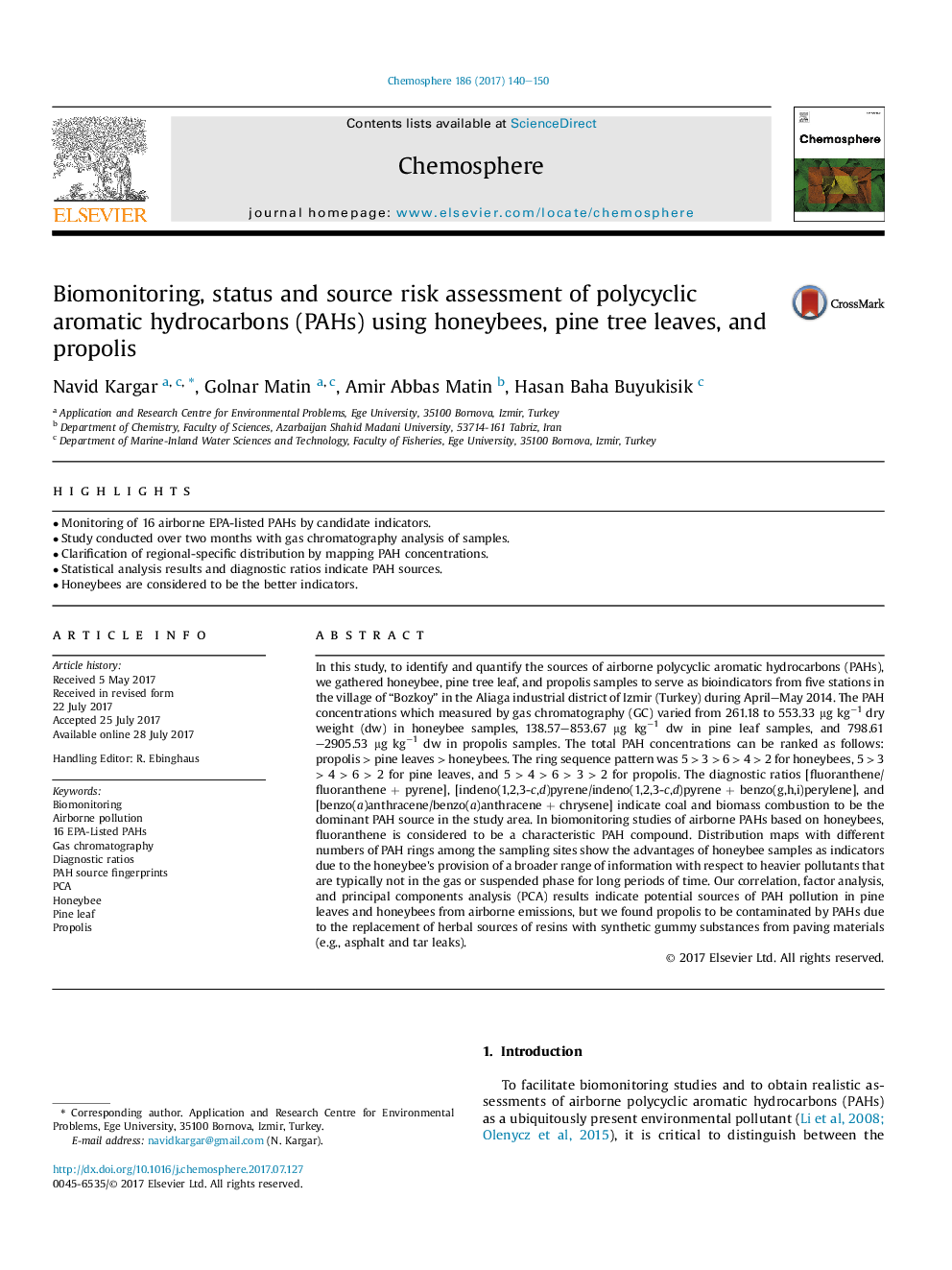| کد مقاله | کد نشریه | سال انتشار | مقاله انگلیسی | نسخه تمام متن |
|---|---|---|---|---|
| 5746013 | 1618785 | 2017 | 11 صفحه PDF | دانلود رایگان |

- Monitoring of 16 airborne EPA-listed PAHs by candidate indicators.
- Study conducted over two months with gas chromatography analysis of samples.
- Clarification of regional-specific distribution by mapping PAH concentrations.
- Statistical analysis results and diagnostic ratios indicate PAH sources.
- Honeybees are considered to be the better indicators.
In this study, to identify and quantify the sources of airborne polycyclic aromatic hydrocarbons (PAHs), we gathered honeybee, pine tree leaf, and propolis samples to serve as bioindicators from five stations in the village of “Bozkoy” in the Aliaga industrial district of Izmir (Turkey) during April-May 2014. The PAH concentrations which measured by gas chromatography (GC) varied from 261.18 to 553.33 μg kgâ1 dry weight (dw) in honeybee samples, 138.57-853.67 μg kgâ1 dw in pine leaf samples, and 798.61-2905.53 μg kgâ1 dw in propolis samples. The total PAH concentrations can be ranked as follows: propolis > pine leaves > honeybees. The ring sequence pattern was 5 > 3 > 6 > 4 > 2 for honeybees, 5 > 3 > 4 > 6 > 2 for pine leaves, and 5 > 4 > 6 > 3 > 2 for propolis. The diagnostic ratios [fluoranthene/fluoranthene + pyrene], [indeno(1,2,3-c,d)pyrene/indeno(1,2,3-c,d)pyrene + benzo(g,h,i)perylene], and [benzo(a)anthracene/benzo(a)anthracene + chrysene] indicate coal and biomass combustion to be the dominant PAH source in the study area. In biomonitoring studies of airborne PAHs based on honeybees, fluoranthene is considered to be a characteristic PAH compound. Distribution maps with different numbers of PAH rings among the sampling sites show the advantages of honeybee samples as indicators due to the honeybee's provision of a broader range of information with respect to heavier pollutants that are typically not in the gas or suspended phase for long periods of time. Our correlation, factor analysis, and principal components analysis (PCA) results indicate potential sources of PAH pollution in pine leaves and honeybees from airborne emissions, but we found propolis to be contaminated by PAHs due to the replacement of herbal sources of resins with synthetic gummy substances from paving materials (e.g., asphalt and tar leaks).
Journal: Chemosphere - Volume 186, November 2017, Pages 140-150